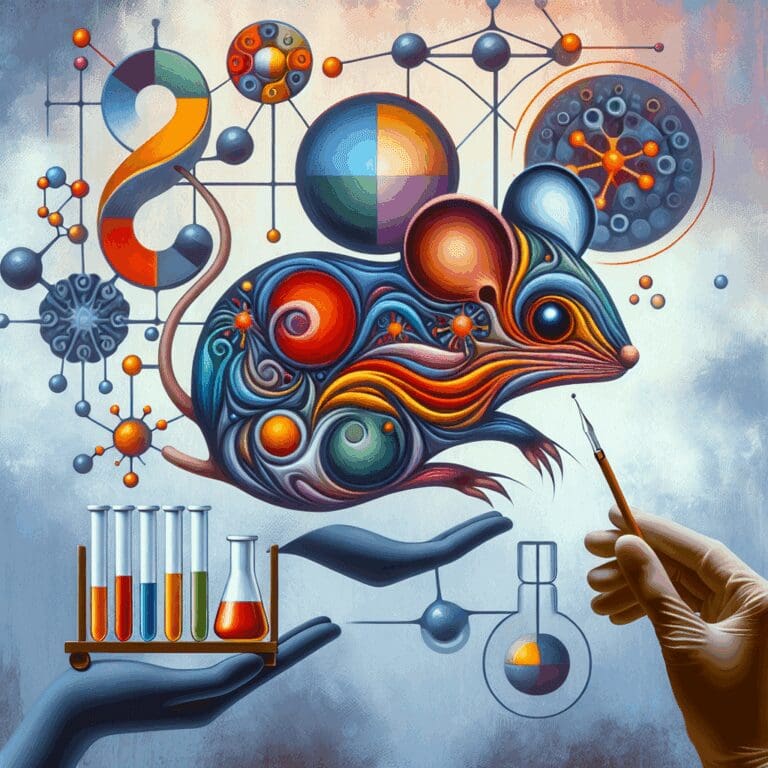Introduction Imagine a world where the small structures within our cells, known as mitochondria, play a crucial role in shaping our social interactions and behaviors. It might sound like something out of a science fiction novel, but emerging research suggests that this is not far from reality. Mitochondrial dysfunction could underlie social deficits and repetitive […]
Tag: Animals

How Pets Can Bring Out the Best in Individuals with Autism
Introduction: The Healing Paws – A New Perspective on Autism Imagine the joy of a child upon meeting a new furry friend for the first time. The laughter, the excitement, and the gentle paws reaching out to offer companionship. Now imagine the profound effect this relationship might have on a child with autism. For years, […]

The Brain’s Dance Between Courage and Caution: Unveiling the CB1 Receptor’s Role in Motivation
Introduction Imagine standing on the edge of a diving board, high above a shimmering pool. You feel the mix of thrill and trepidation, the push and pull of an invisible force that determines whether you leap or retreat. This dynamic dance is a classic representation of what psychologists call approach and avoidance motivation. Why do […]

Understanding the Whirlwind: How Environment Shapes Compulsive Tail Chasing in Dogs
Introduction: A Doggy Dilemma Imagine you’re at the park, basking in the sun while your furry friend romps around in joy. Suddenly, your dog, seemingly out of nowhere, begins chasing its tail in relentless circles. Is it just a playful quirk or something deeper? This behavior, while amusing at times, can be much more than […]

Understanding Autism: Lessons from Engrailed-2 Knockout Mice
Introduction Imagine being trapped in a world where the social norms everyone else navigates with ease are an intricate puzzle you’ve yet to decipher. For individuals with autism, this puzzle often feels unsolvable. Understanding the biological roots of autism, a complex neurological disorder affecting social interaction and behavior, remains a high-priority challenge in psychology and […]

Exploring the Equine Mind: Horses as Ethological Models of Depression
Introduction: Bridging the Emotional Gap Between Species Imagine standing in a pastoral meadow, observing as a group of horses graze peacefully. Among them, one horse catches your eye—not because of its grace but due to a different kind of stillness, almost as if time has paused just for it. What you might not realize at […]

Emotional Turmoil: Unraveling the Link Between the Heart and the Head in Epilepsy
Introduction: Tapping into the Emotional Brainstorm Imagine living in a world where your emotions are a never-ending roller coaster, largely dictated by invisible storms in your brain. For individuals grappling with temporal lobe epilepsy (TLE), this is more than just an abstract notion—it’s a daily reality. Emotional disturbances such as anxiety and depression frequently accompany […]

Decoding Mania: How a Lab Mouse Could Transform Our Understanding of Bipolar Disorder
Introduction Imagine having so much energy that it feels like you could conquer the world, but within the blink of an eye, this exhilarated state could turn into a debilitating burden. For individuals diagnosed with Bipolar Disorder (BPD), this is not just a vivid imagination but a reality that significantly affects their everyday lives. BPD […]

Unveiling the Mood Molecule: How Tryptophan Depletion Affects Brain Chemistry
Introduction: The Quest to Understand Our Emotional Blueprint Imagine if we could peek into the human brain and control the very molecules that dictate our emotions. This idea, though still within the realm of science fiction, has been nudged closer to reality by groundbreaking research into the effects of neurotransmitters—chemical messengers in the brain. Specifically, […]

How Medication During Pregnancy Can Change the Brain’s Response to Social and Sensory Stimuli
Introduction Imagine a pill that’s meant to help, but secretly changes the way your brain works. That’s the intriguing story behind a recent research paper on a medication called valproic acid, or VPA for short. Often used to treat seizures, VPA has been prescribed even during pregnancy despite its known risks. But what if we […]
